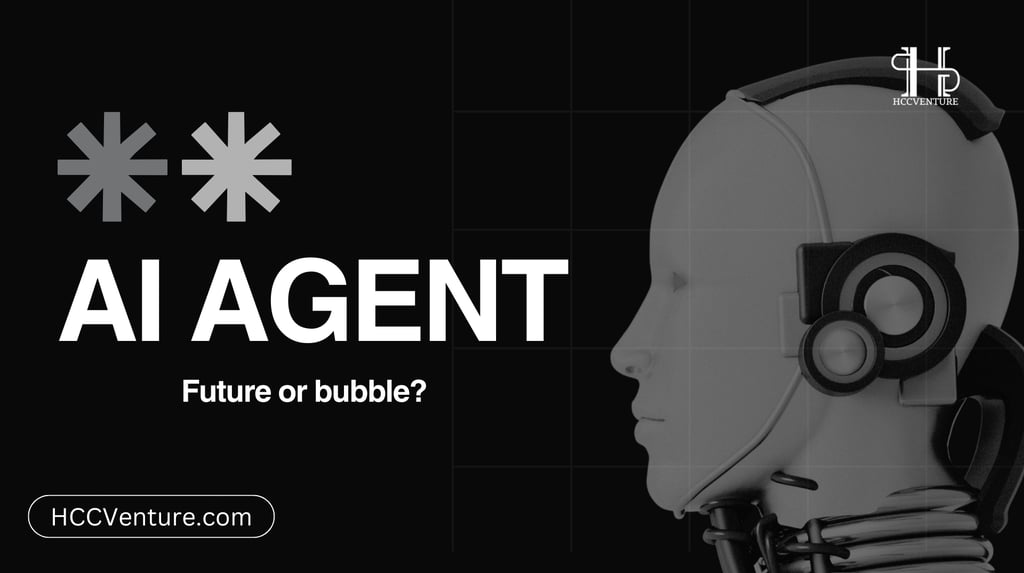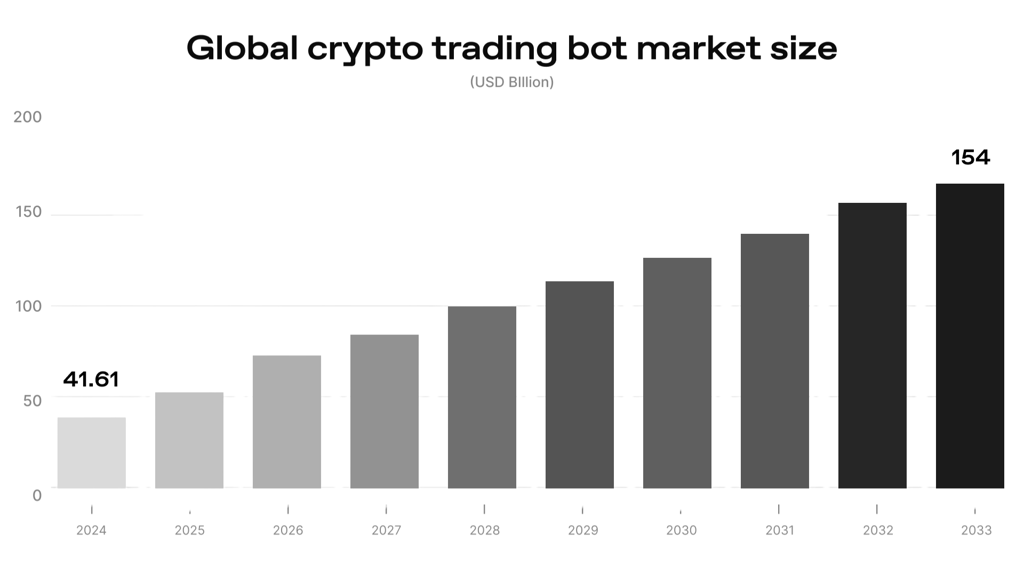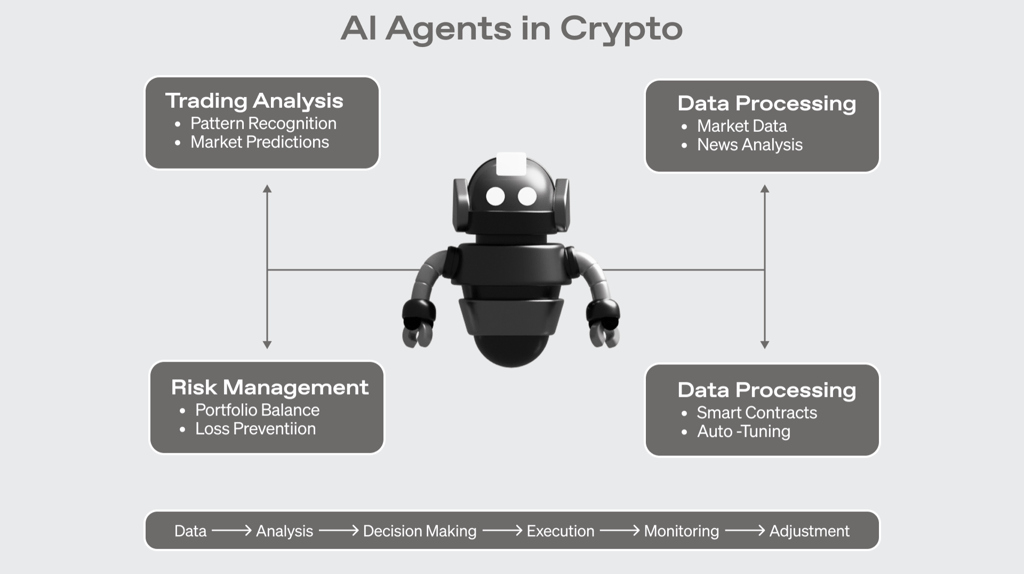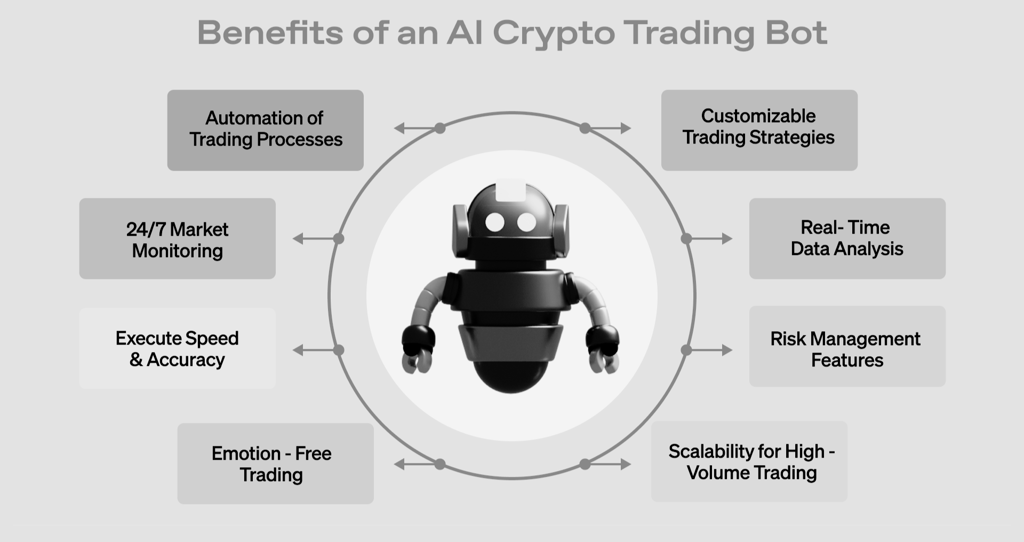AI Agents - Practical Utility or Bubble?
AI Agents trading bots are reshaping the industry with algorithmic trading, instantly executing adaptive strategies. Startups must identify key opportunities for innovation and learn to navigate the new landscape.
INSIGHTS
2/20/20256 min read


According to ChainChatcher: “The total market value of the crypto AI industry has reached 150 billion USD in 2025”
Can these new AI Agents transform crypto trading and provide automated solutions for trading, portfolio management, and data analytics?
AI Agents can create entire ecosystems that interact, adapt, and evolve, creating an intelligent Web3 layer that continuously learns and improves. Ultimately, this will reshape how automation and interaction work together.
To put it bluntly, an approach that combines the consistency of a trading bot with the adaptability of an AI agent opens the door to the most effective strategy.
Crypto AI agents aren’t just watching the game and playing along here — they’re redefining the game. Using algorithmic trading, they can analyze market data with unparalleled accuracy and execute trades instantly.
Let’s take a deeper look at how AI agents are transforming cryptocurrency trading and why you should consider this whether you’re a startup or just a sole user.
What are AI trading bots?
AI trading bots are software programs that utilize algorithms to automate asset trading in financial markets.
They are designed to seamlessly interact and analyze large data sets to uncover potential opportunities, perform risk analysis, execute trades, and manage portfolios – all without human intervention.
According to Business Research: “The cryptocurrency trading bot market size is valued at around US$41.61 billion in 2024 and is expected to reach US$154 billion by 2033, growing at a compound annual growth rate (CAGR) of around 14% from 2025 to 2033.”


The Crypto Trading Bot market is growing rapidly due to the popularity of self-service automated trading among retail and institutional investors. The bots’ sophisticated algorithms and efficient artificial intelligence execute trades and take advantage of market trends, price differences, and volatility.
The growing adoption of cryptocurrencies worldwide has led to an increasing demand for automated trading tools that, when used, allow for 24/7 trading without human intervention.
In short, centralized AI has the advantage of top-down control, but single errors and data security risks are major weaknesses.
On the other hand, decentralized AI breaks the centralized model by distributing resources across the network. This has positive effects by amplifying privacy, resilience, and scalability.
What are the benefits and limitations of AI crypto trading bots?
As illustrated below, automating processes delivers consistent, data-driven results, unaffected by the irrationality of human emotions.


On the other hand, it is important to consider the limitations and challenges.
Their inherently rigid, rules-based design poses risks that users need to be aware of. For example, they can have difficulty adjusting to sudden market changes without manual updates, and programming errors can lead to repeated mistakes and mounting losses.
Lacking contextual awareness, these bots are unable to process external factors such as predicting market crashes, breaking news, or geopolitical events, leaving them vulnerable and vulnerable to volatile conditions. Without the ability to adapt, they remain vulnerable in dynamic trading environments.
Cost is another factor to consider as many bots charge a subscription fee and may also include potential exchange fees.
Finally, crypto trading bots require more than just technical knowledge, as many bots require an understanding of trading strategies and technical analysis, which can be challenging for beginners.
Digging a little deeper, and to give you the bigger picture here, it is important to realize that the variety of crypto AI agents is quite wide. This becomes clear when looking at some use case examples.


Real Use Cases of Decentralized Cryptocurrency AI Agent Bots
To help you understand better, some of the key use cases that demonstrate the potential of decentralized AI bots in various fields, from finance to gaming and social interactions, are listed here:
AI Trading Bots : These bots leverage advanced machine learning algorithms to analyze market data, predict trends, and execute trades. They can optimize profits through real-time predictive analytics that can adapt to real-time market conditions. A good example here is Cryptohopper , which automates trades across multiple exchanges and uses AI to optimize its trading strategies.
MEV AI arbitrage bots : MEV (Maximum Extracted Value) bots scan unconfirmed mempool transactions, reordering them to exploit arbitrage opportunities: buying low and selling high in the same block. These AI bots can influence block composition, creating new profit strategies and improving market efficiency in DeFi. Flashbots is an R&D organization focused on mitigating the negative externalities of MEV in Ethereum . It provides tools and strategies to manage MEV extraction.
DeFi trading bots: These bots can automate liquidity management and interest rate adjustments in lending protocols. Furthermore, DeFi bots can manage yield farming, staking, and yield optimization. For startups offering these bots, they can connect users to the growing DeFi ecosystem and dynamically find and provide seamless access to financial opportunities. Mizar offers a DeFi trading platform that includes various crypto trading tools and bots.
Grid trading bot: Grid trading involves placing a series of buy and sell orders at set prices in a grid pattern at pre-set intervals above and below the underlying price. This allows the bot to profit from market volatility and movements. Pionex has a free built-in grid trading bot that can be deployed for this type of trading strategy.
Gaming NPCs and social interaction bots : These AI agents can act as non-player characters in blockchain games, competitions or social platforms, providing adaptive and intelligent responses to enrich user interactions. Axie Infinity’s AI Opponents is a prime example. It incorporates AI-controlled non-player characters (NPCs) to enhance gameplay and provide dynamic challenges for players.
DAO Governance Bots : AI-powered DAOs leverage machine learning to analyze blockchain data, track social media trends, enhance decision-making, and execute transactions, making DAO governance more efficient. They also enable community members to make more informed choices about proposals, governance changes, and other important decisions. Aragon uses AI to govern DAOs, process votes, and automate proposal management.
Cryptocurrency wallet management bots : AI agents can automate tasks like monitoring wallet balances, making trades, and providing investment advice, making cryptocurrency investing easier. They can also enhance wallet autonomy and reinvest rewards through smart contracts. Coinbase has several cryptocurrency wallet management bots, such as GoodCrypto , WunderTrading , etc.
The field of AI agent use is diverse and is constantly growing as more opportunities arise. However, let's continue to focus on the world of AI cryptocurrency trading.
AI Agent Adoption: Is This the Beginning of the Next Era of Crypto Trading?
Looking ahead, the AI agent economy is already well-developed. AI agents are now influencing everything from MEV arbitrage bots and cryptocurrency trading to gaming NPCs and DAO management.
What's driving this rapid rise, and are AI agents just a passing bubble?
As AI infrastructure protocols continue to mature, this will lead to easier development of complex AI agents and their associated use cases. All of this highlights the ease of more advanced AI agents entering the scene, pushing this burgeoning field to new heights.
However, to be clear, the lack of clear regulations in the crypto trading bot industry creates uncertainty for investors and developers, affecting wider adoption.
Future regulations could impose restrictions on the operation of AI bots, potentially limiting market growth and further hindering adoption in the trading industry.
Additionally, the absence of any globally recognized standards can lead to inconsistent enforcement and lack of anti-money laundering (AML) compliance, increasing the risk of exploitation.
Furthermore, once AI agents become capable cryptocurrency users in the future, this will likely lead to an exponential increase in the number of interactions, transactions, and collaborations between them.
As this becomes increasingly noticeable, such a massive increase in AI-related activity will inevitably require significant computing power and storage capacity, which will likely need to be supported by decentralized physical infrastructure network ( DePIN ) projects.
Names like Akash , Render , io.net , and Grass tend to combine both AI and resources like compute, storage, and bandwidth. This convergence could be important in keeping up with the growing demands of AI agents.
As we move closer to Q2 2025, more decentralized AI agents will automatically manage crypto wallets in the Web3 space with unprecedented agility .
Explore HCCVenture group
HCCVenture © 2023. All rights reserved.


Connect with us
Popular content
Contact to us
E-mail : holdcoincventure_contact@hccventure.com
Register : https://linktr.ee/holdcoincventure
Disclaimer: The information on this website is for informational purposes only and should not be considered investment advice. We are not responsible for any risks or losses arising from investment decisions based on the content here.


TERMS AND CONDITIONS • CUSTOMER PROTECTION POLICY
ANALYTICAL AND NEWS CONTENT IS COMPILED AND PROVIDED BY EXPERTS IN THE FIELD OF DIGITAL FINANCE AND BLOCKCHAIN BELONGING TO HCCVENTURE ORGANIZATION, INCLUDING OWNERSHIP OF THE CONTENT.
RESPONSIBLE FOR MANAGING ALL CONTENT AND ANALYSIS: HCCVENTURE FOUNDER - TRUONG MINH HUY
Read warnings about scams and phishing emails — REPORT A PROBLEM WITH OUR SITE.
